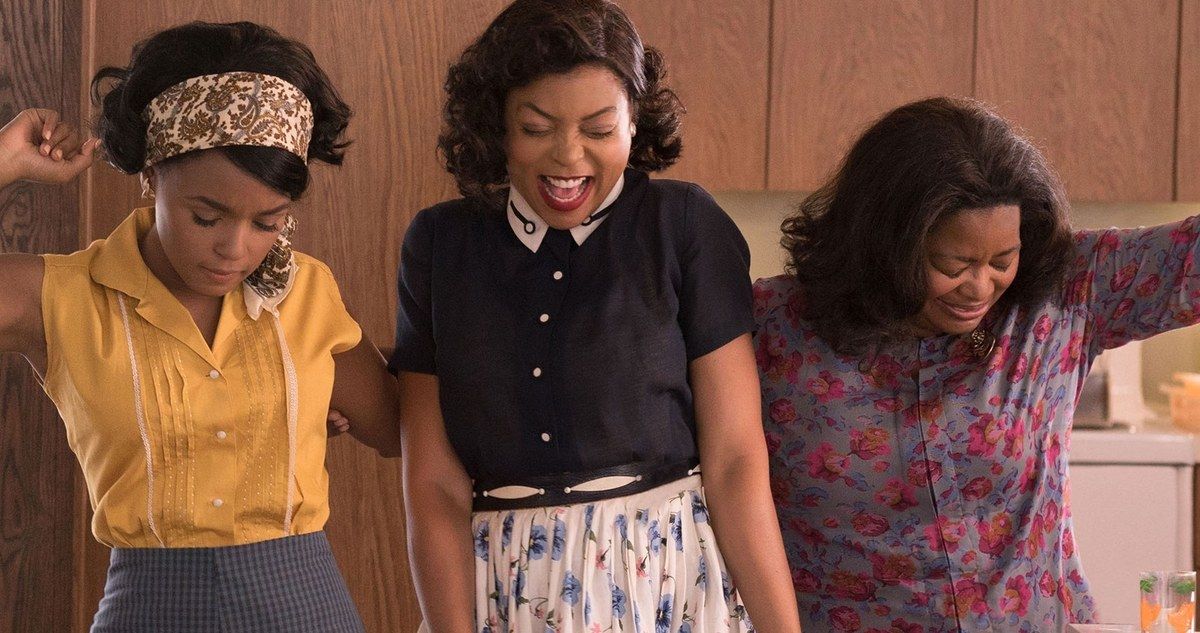Every kid growing up in America learns about John Glenn and Alan Shepard. They were the astronaut heroes of the Mercury missions. Pioneers at the dawn of space travel. What we were never taught is the story of the African-American women critical to their success. Hidden Figures gives them their long-deserved spotlight. The film focuses on three women of color that transcended the boundaries of their time. They rose above a segregated, sexist, society to show that intellect is color blind and gender neutral.
We first meet Katherine Goble (Taraji P. Henson) as a child. She was a gifted math prodigy. In early 1961, Katherine worked with Mary Jackson (Janelle Monae) and Dorothy Vaughan (Octavia Spencer) as "computers" for NASA in Virginia. That was the term given to mathematicians that checked the work of the engineers. They were "colored computers". They worked in a basement. They could only use colored bathrooms, water fountains, and break rooms. Even though they were trusted with verifying calculations that lives depended on, they were second class citizens with no chance of upward mobility.
Alas time and circumstances are more than a match for discrimination. The Russians had launched Sputnik, the first satellite. Then followed that epic feat by sending Yuri Gagarin on the first manned spaceflight. As America raced to catch up to their cold war adversary, these women seized opportunity. Katherine Goble found herself on the task force calculating John Glenn's orbital mission. Mary Jackson, who worked diligently on the design of the Friendship Seven capsule, decided that she had the right to be an aeronautical engineer. And Dorothy Vaughan, their leader, who had supervised the "colored computers" with no formal title or salary, had enough of working in the basement.
Hidden Figures is a heart-warming take on their accomplishments. The film shows the ugly racism of the era, but with a tactical touch. While it shows their struggle against an unfair system, it also shows their deep friendship and personal lives. This take by writer/director Theodore Melfi is a compassionate one. Just as in his previous film, the fantastic St. Vincent, the characters, not the moment or setting, is the star of the story. Melfi shows these women coming home late to their families, shopping with their children. On top of everything else, they were wives, mothers, and bread winners for their families. They could have crumbled, but had a fierce sense of patriotism and pride in their work.
Melfi does a banner job showing the absurdity of segregation. One of the running themes in Hidden Figures, literally, is the distance Katherine Goble traveled to use the bathroom. There were no "colored bathrooms" for the task force. It was humiliating for her to run to a far away building to urinate. There are multiple scenes that illustrate the ugliness of the time with a deft touch, as opposed to more visceral imagery.
Hidden Figures is a historical tribute foremost, but also a feel good film. Some parts are laid on thick, but the overall plot structure is quite successful. We discover these amazing women, the period, and background of America's first space efforts. Black women are rarely seen as scientists or mathematicians on film. Coming from 20th Century Fox, Hidden Figures is certainly long overdue.

